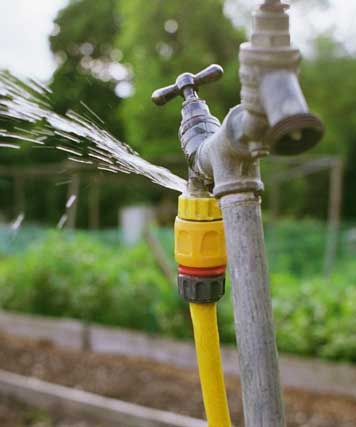Overview To Water Leakage Detection At Home
Overview To Water Leakage Detection At Home
Blog Article
How do you really feel on the subject of Locating water leaks?

Early discovery of dripping water lines can reduce a prospective calamity. Some small water leaks may not be visible.
1. Examine the Water Meter
Every home has a water meter. Inspecting it is a surefire way that aids you discover leakages. For beginners, turn off all the water resources. Make certain nobody will certainly purge, use the tap, shower, run the cleaning machine or dish washer. From there, go to the meter as well as watch if it will certainly change. Considering that no person is using it, there must be no activities. That shows a fast-moving leak if it moves. If you identify no changes, wait an hour or two as well as examine back once more. This means you may have a sluggish leak that might also be below ground.
2. Examine Water Intake
Assess your water bills and track your water consumption. As the one paying it, you ought to observe if there are any type of disparities. If you detect sudden changes, regardless of your intake coinciding, it suggests that you have leakages in your plumbing system. Bear in mind, your water costs need to drop under the same range monthly. An unexpected spike in your bill indicates a fast-moving leak.
On the other hand, a stable increase monthly, even with the same habits, reveals you have a sluggish leak that's also slowly rising. Call a plumber to completely check your residential or commercial property, specifically if you really feel a warm area on your flooring with piping beneath.
3. Do a Food Coloring Test
When it comes to water usage, 30% comes from toilets. If the shade somehow infiltrates your dish during that time without flushing, there's a leakage between the container as well as bowl.
4. Asses Outside Lines
Do not neglect to check your outside water lines also. Ought to water leak out of the connection, you have a loosened rubber gasket. One tiny leak can throw away bunches of water as well as increase your water costs.
5. Analyze the scenario and inspect
Homeowners should make it a habit to inspect under the sink counters as well as also inside cabinets for any type of bad odor or mold and mildew development. These 2 warnings indicate a leakage so prompt attention is needed. Doing regular inspections, even bi-annually, can save you from a major issue.
Check for discolorations and also damaging as a lot of pipelines and appliances have a life span. If you suspect dripping water lines in your plumbing system, do not wait for it to intensify.
Early detection of dripping water lines can alleviate a potential disaster. Some little water leaks may not be noticeable. Inspecting it is a surefire means that assists you discover leakages. One small leak can waste bunches of water as well as spike your water costs.
If you believe leaking water lines in your plumbing system, don't wait for it to intensify.
WARNING SIGNS OF WATER LEAKAGE BEHIND THE WALL
PERSISTENT MUSTY ODORS
As water slowly drips from a leaky pipe inside the wall, flooring and sheetrock stay damp and develop an odor similar to wet cardboard. It generates a musty smell that can help you find hidden leaks.
MOLD IN UNUSUAL AREAS
Mold usually grows in wet areas like kitchens, baths and laundry rooms. If you spot the stuff on walls or baseboards in other rooms of the house, it’s a good indicator of undetected water leaks.
STAINS THAT GROW
When mold thrives around a leaky pipe, it sometimes takes hold on the inside surface of the affected wall. A growing stain on otherwise clean sheetrock is often your sign of a hidden plumbing problem.
PEELING OR BUBBLING WALLPAPER / PAINT
This clue is easy to miss in rooms that don’t get much use. When you see wallpaper separating along seams or paint bubbling or flaking off the wall, blame sheetrock that stays wet because of an undetected leak.
BUCKLED CEILINGS AND STAINED FLOORS
If ceilings or floors in bathrooms, kitchens or laundry areas develop structural problems, don’t rule out constant damp inside the walls. Wet sheetrock can affect adjacent framing, flooring and ceilings.
https://www.servicemasterbyzaba.com/blog/how-to-detect-water-leakage-in-walls/

We were brought to that write-up on Leaking water lines through someone on a different blog. Those who appreciated our page plz don't forget to pass it around. Thanks a lot for your time. Don't hesitate to check up our blog back soon.
Report this page